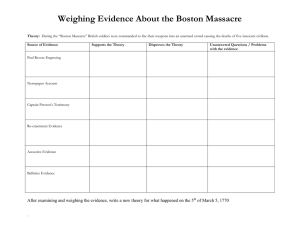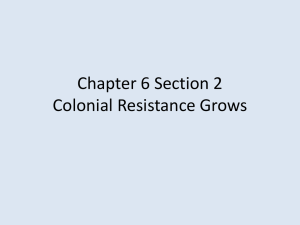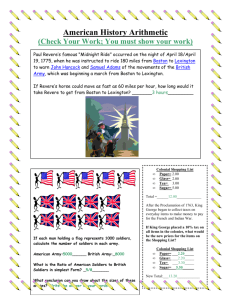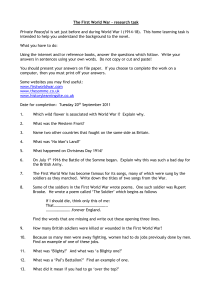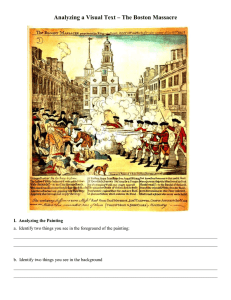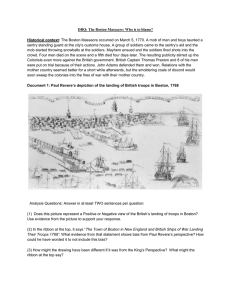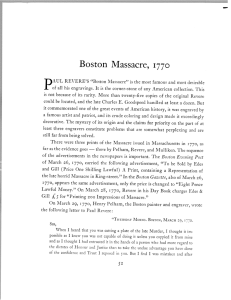Source 1 British View – “Hardly a Massacre”
advertisement
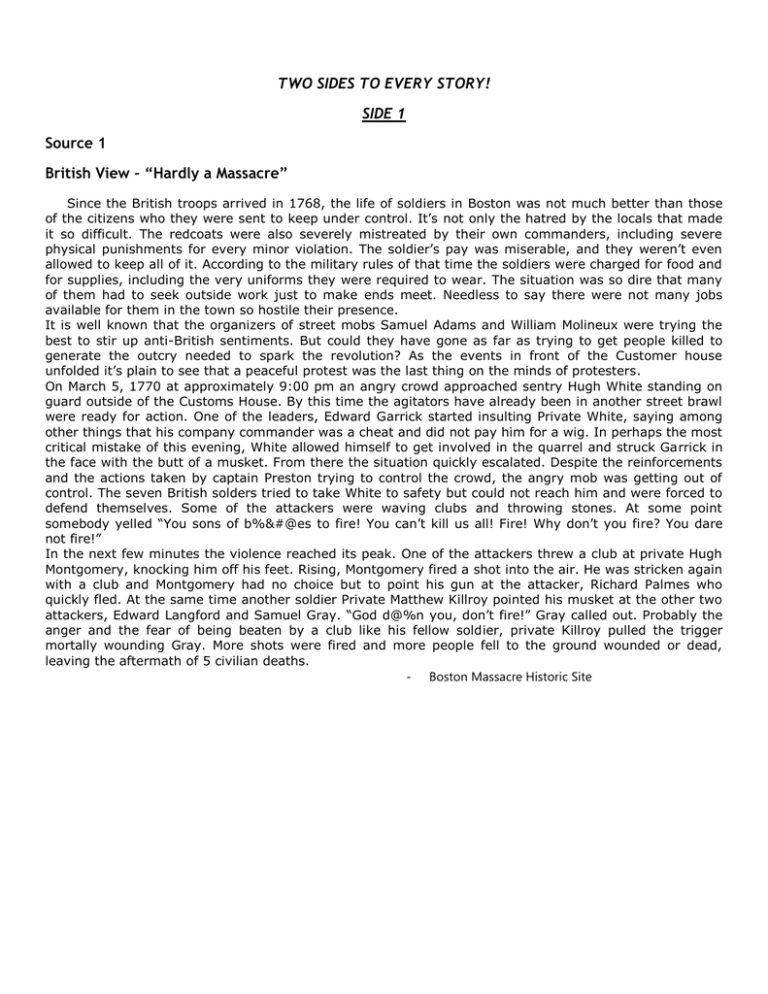
TWO SIDES TO EVERY STORY! SIDE 1 Source 1 British View – “Hardly a Massacre” Since the British troops arrived in 1768, the life of soldiers in Boston was not much better than those of the citizens who they were sent to keep under control. It’s not only the hatred by the locals that made it so difficult. The redcoats were also severely mistreated by their own commanders, including severe physical punishments for every minor violation. The soldier’s pay was miserable, and they weren’t even allowed to keep all of it. According to the military rules of that time the soldiers were charged for food and for supplies, including the very uniforms they were required to wear. The situation was so dire that many of them had to seek outside work just to make ends meet. Needless to say there were not many jobs available for them in the town so hostile their presence. It is well known that the organizers of street mobs Samuel Adams and William Molineux were trying the best to stir up anti-British sentiments. But could they have gone as far as trying to get people killed to generate the outcry needed to spark the revolution? As the events in front of the Customer house unfolded it’s plain to see that a peaceful protest was the last thing on the minds of protesters. On March 5, 1770 at approximately 9:00 pm an angry crowd approached sentry Hugh White standing on guard outside of the Customs House. By this time the agitators have already been in another street brawl were ready for action. One of the leaders, Edward Garrick started insulting Private White, saying among other things that his company commander was a cheat and did not pay him for a wig. In perhaps the most critical mistake of this evening, White allowed himself to get involved in the quarrel and struck Garrick in the face with the butt of a musket. From there the situation quickly escalated. Despite the reinforcements and the actions taken by captain Preston trying to control the crowd, the angry mob was getting out of control. The seven British solders tried to take White to safety but could not reach him and were forced to defend themselves. Some of the attackers were waving clubs and throwing stones. At some point somebody yelled “You sons of b%&#@es to fire! You can’t kill us all! Fire! Why don’t you fire? You dare not fire!” In the next few minutes the violence reached its peak. One of the attackers threw a club at private Hugh Montgomery, knocking him off his feet. Rising, Montgomery fired a shot into the air. He was stricken again with a club and Montgomery had no choice but to point his gun at the attacker, Richard Palmes who quickly fled. At the same time another soldier Private Matthew Killroy pointed his musket at the other two attackers, Edward Langford and Samuel Gray. “God d@%n you, don’t fire!” Gray called out. Probably the anger and the fear of being beaten by a club like his fellow soldier, private Killroy pulled the trigger mortally wounding Gray. More shots were fired and more people fell to the ground wounded or dead, leaving the aftermath of 5 civilian deaths. - Boston Massacre Historic Site TWO SIDES TO EVERY STORY! Side 2 Source 2 - Revere’s “Bloody Massacre” Engraving: Source 3 - Death Notice of Patrick Carr: Name___________________________________________________________________ TWO SIDES TO THE STORY TRAGEDY IN BOSTON BRITISH VIEW (Source 1) Why was it difficult for British soldiers? According to the account, what was the cause of the conflict? . COLONISTS VIEW (Source 2 and 3) Source 1 is an engraving made by Paul Revere following the violence in Boston. How does his image differ from the British account? How do you think the engraving and death notice affected the hearts and minds of the colonies? *Why is Paul Revere’s engraving seen by the British as colonial propaganda? Does this account change your perspective on what happened in Boston? Why or why not? *What effect do you predict this image will have on the colonies? Why? Imagine you have been given the task of placing judgment in this case - how would you rule? Who do you think was guilty – the soldiers or the colonists or both? Do you think the British soldiers who killed the civilians should be found guilty? Why or why not? (Please answer all parts of question in a full paragraph on the reverse) Historical Note: John Adams defended the soldiers in the case when it went to court. Why do you think he would agree to take on their case?
